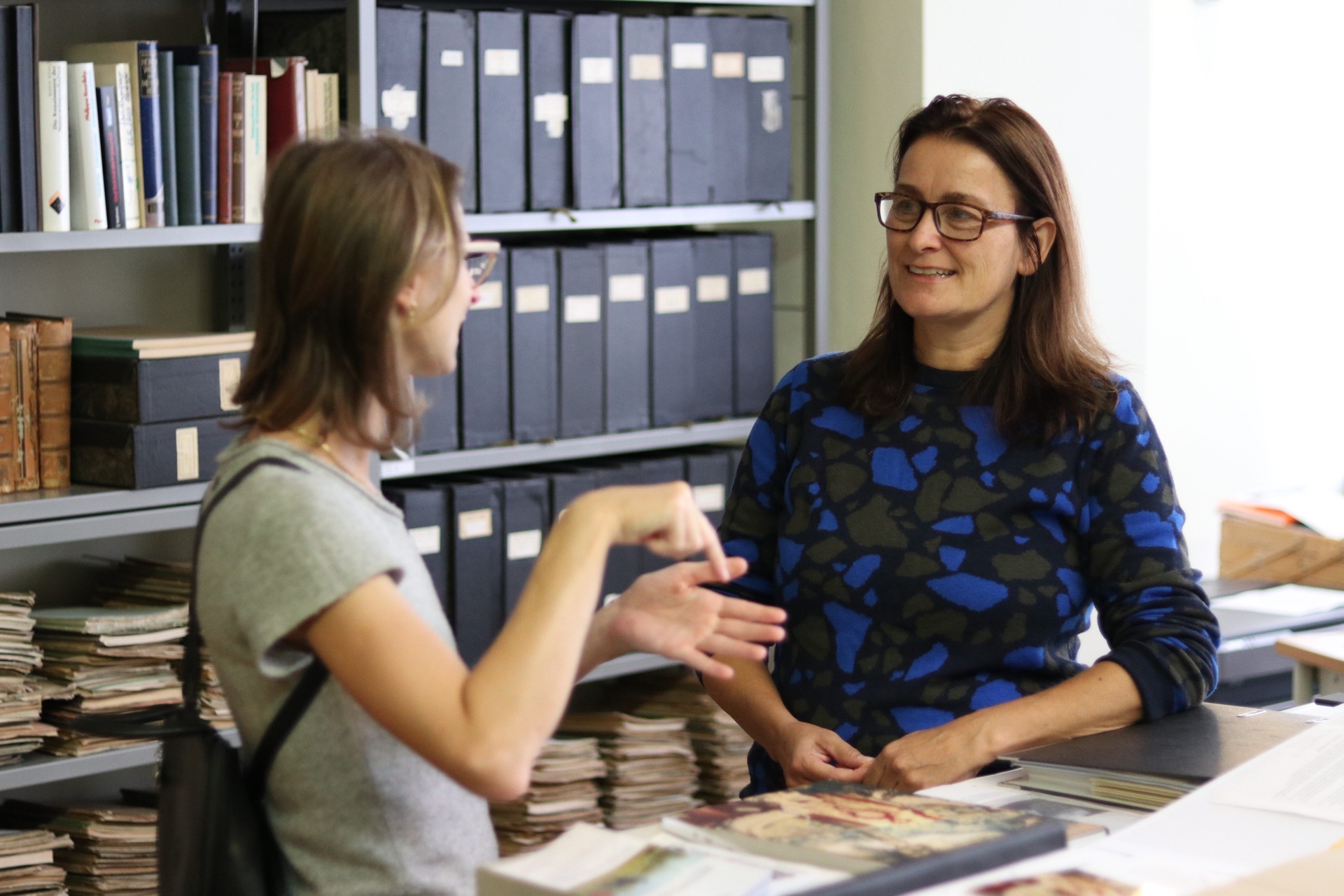We celebrate 25 years of the Biohistoricum at the Museum Koenig Bonn
 Dr Katharina Schmidt-Loske (right) at work in the Biohistoricum. © LIB
Dr Katharina Schmidt-Loske (right) at work in the Biohistoricum. © LIB
The Biohistoricum has already existed in Bonn for a quarter of a century. From 23 to 25 June we will be celebrating this special birthday as part of the DGGTB annual conference. The programme also includes an exciting lecture, which all visitors can attend free of charge.
The Biohistoricum was founded in 1998 as a museum and research archive before it became part of the Museum Koenig Bonn ten years later and Dr Katharina Schmidt-Loske took over as scientific director. Since its beginnings, the institution has had the goal of preserving the history of biology and is primarily dedicated to indexing and recording the estates of important biologists, including the historical archives of the German Zoological Society and the Natural History Society of the Rhineland and Westphalia.
In recent years, for example, books and scientific contributions on the biologists Fritz and Hermann Müller, on the botanist Eduard Strasburger and on the artist and early naturalist Maria Sibylla Merian have been presented. At the same time, various special exhibitions were created in cooperation, for example on Alexander von Humboldt’s KOSMOS, but also, on the impressive work of the chief taxidermist of the Museum Koenig Bonn and passionate draughtsman Wolfgang Hartwig.
“We are proud and grateful to be able to house this treasure trove of valuable literature dating back to the 17th century and to make it accessible for research,” says the scientific director Dr Katharina Schmidt-Loske. The current challenge of the Biohistoricum is to transfer the archive’s holdings from the current location on Adenauerallee to the extension building in Poppelsdorf.
This year’s 31st annual conference of the Deutschen Gesellschaft für Geschichte und Theorie der Biologie (DGGTB, = German Society for the History and Theory of Biology) has “Biodiversity, Nature Conservation and Politics” as its theme. It will take place from 23 to 25 June at the Museum Koenig Bonn and is organised by Katharina Schmidt-Loske. As part of this, participants can expect not only exciting specialist lectures and guided tours of the Museum Koenig Bonn exhibition, but also the celebration of the 25th anniversary of the Biohistoricum.
Everyone can attend the public lecture “Wilde Weiden” (= Wild Willows) on 23 June at 7 pm free of charge – even without a conference ticket.








